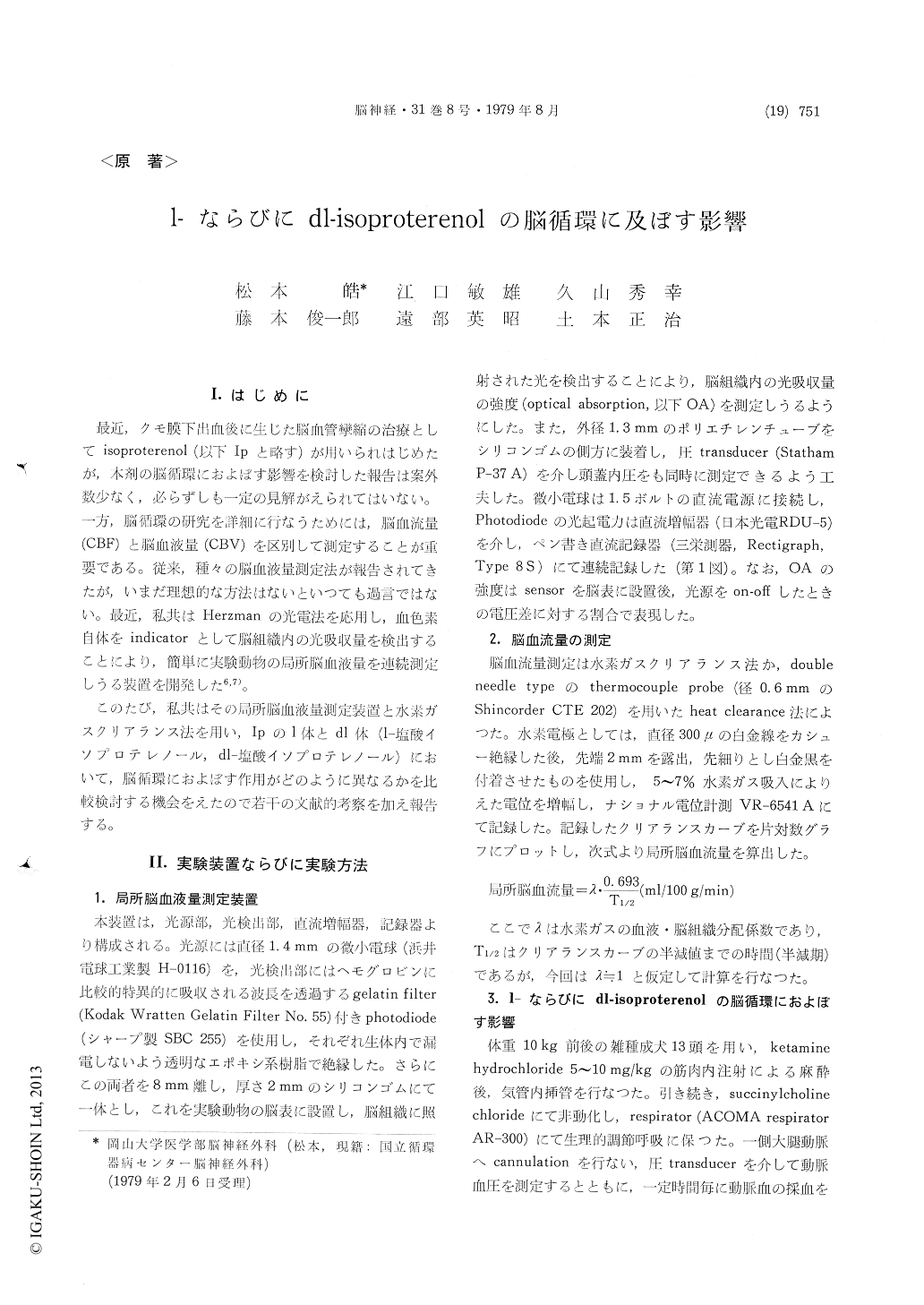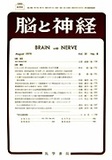Japanese
English
- 有料閲覧
- Abstract 文献概要
- 1ページ目 Look Inside
I.はじめに
最近,クモ膜下出血後に生じた脳血管攣縮の治療としてisoproterenol (以下Ipと略す)が用いられはじめたが,本剤の脳循環におよぼす影響を検討した報告は案外数少なく,必らずしも一定の見解がえられてはいない。一方,脳循環の研究を詳細に行なうためには,脳血流量(CBF)と脳血液量(CBV)を区別して測定することが重要である。従来,種々の脳血液量測定法が報告されてきたが,いまだ理想的な方法はないといつても過言ではない。最近,私共はHerzmanの光電法を応用し,血色素自体をindicatorとして脳組織内の光吸収量を検出することにより,簡単に実験動物の局所脳血液量を連続測定しうる装置を開発した6,7)。
このたび,私共はその局所脳血液量測定装置と水素ガスクリアランス法を用い,Ipの1体とdl体(1—塩酸イソプロテレノール,dl—塩酸イソプロテレノール)において,脳循環におよぼす作用がどのように異なるかを比較検討する機会をえたので若干の文献的考察を加え報告する。
Isoproterenol, which is a beta adrenergic stimu-lant, has three different types; two isomers and its racemic compound. Recently, it is well known that isoproterenol has a vasodilatation effect, since Sundt et al. have used isoproterenol for the treat-ment of vasospasm following subarachnoid hemor-rhage. But its influence on cerebral circulation in normal brain is still controversial. And also there are few reports to compare the effects of 1-iso-proterenol with that of its racemic compound on cerebral blood flow.
The present study investigated the effect of two types of isoproterenol (1- and dl-isoproterenol) on cerebral circulation in 13 mongrel dogs anesthetized with 5-10 mg/kg of ketamine hydrochloride. Before and after intravenous injection of isoproterenol, cerebral blood flow was measured by hydrogen clearance technique and heat clearance method. Similarly cerebral blood volume was monitored by photoelectric method which has been developed in our laboratory. The sensor of this apparatus for measuring cerebral blood volume consists of three gadgets ; microlamp, photodiode to which infra-red filter is attached, and polyethylene catheter with its tip open for intracranial pressure measurement. The sensor is applied on the brain surface to measure the intensity of the optical absorption of hemoglobin in the brain tissue.
First of all, we investigated the effects of intra-venous injection of 1-isoproterenol in increasingdoses from 0.05 mg to 0.4 mg. A dose-dependent increase in cerebral blood flow was observed in this experiment. Then we used 0.2 mg of each type of isoproterenol for intravenous injection to compare the effects of both isoproterenol on cere-bral blood flow. In each type of isoproterenol, cerebral blood volume and intracranial pressure increased immediately after injection, and then followed by increase of cerebral blood flow up to 120% by comparing the preinjection value. Then this phenomena adversely started to decrease for the next 30 minutes and finally disappeared. Namely, 3 minutes after intravenous injection of 1- and dl-isoproterenol, cerebral blood flow was found to be increased by 121.8±13.8% (mean values ±SD) and 122±12.3% of preinjection value, respectively. Fifteen minutes after the injection, cerebral blood flow showed 106.2±12.2% and 108.4 15.5%. Finally, 30 minutes after the injection cerebral blood flow were estimated 103.0±11.9% and 100.8±18.6%. We could not find out any difference between the effects of both types of isoproterenol on cerebral blood flow.
These experimental data assumed that both l-and dl-isoproterenol directly dilate the cerebral vessels resulting in increase of cerebral blood flow after intravenous administration.

Copyright © 1979, Igaku-Shoin Ltd. All rights reserved.


